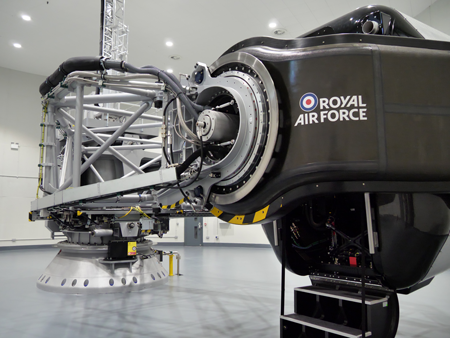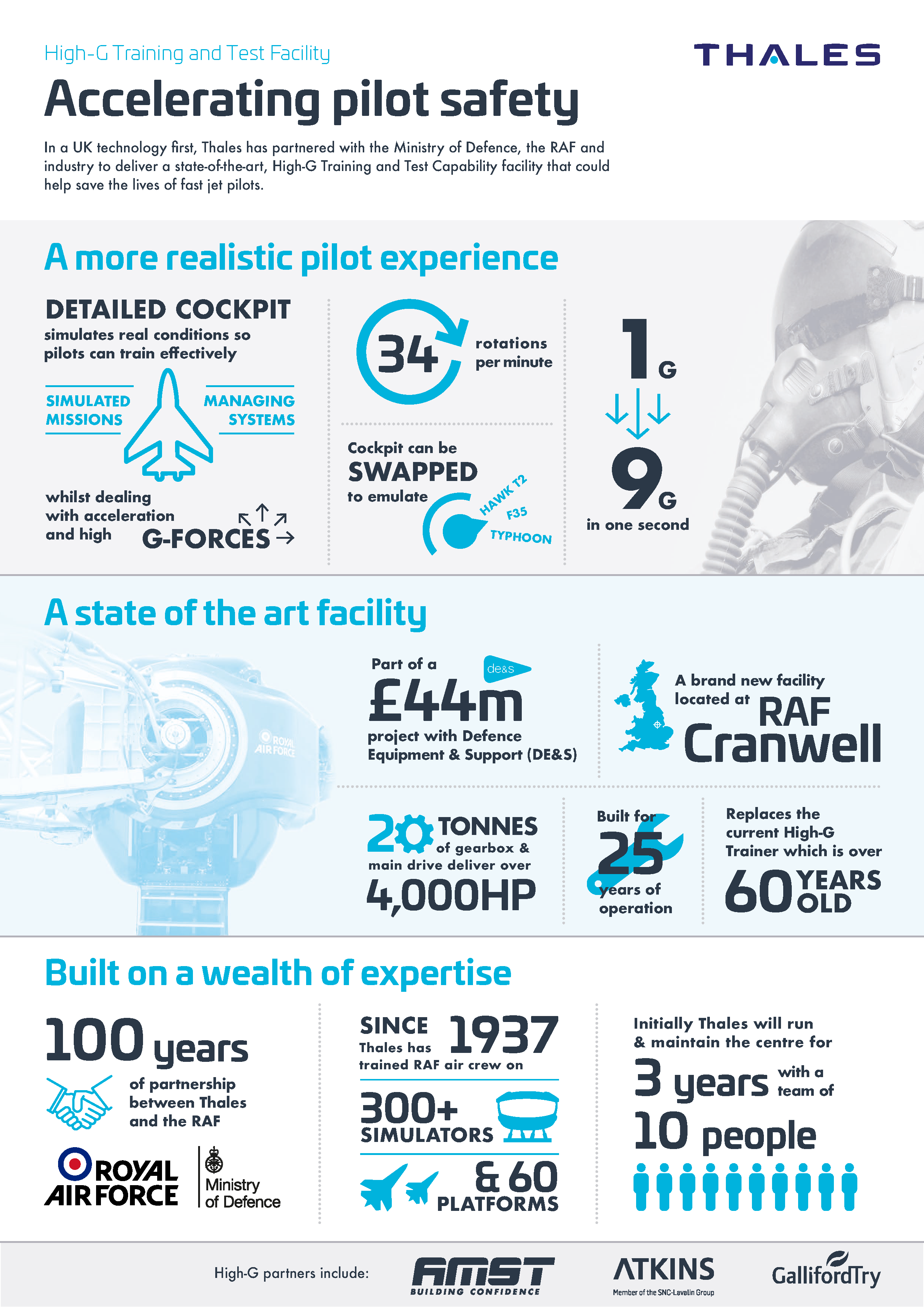Flight club: new High-G training and test facility for fast-jet pilots
Thales opens a new High-G Training and Test Facility to train fast-jet pilots to withstand high G-forces in the air at the RAF College Cranwell

On 4 February 2019, the new, state-of-the-art High G Training and Test Capability Facility was officially opened at the RAF College Cranwell. As part of a £44 million project with the Ministry of Defence, the facility has been designed to improve fighter pilot safety and provide realistic training for pilots exposed to high G-forces during combat missions. It will be run by Thales UK, in partnership with the RAF Centre of Aviation Medicine (CAM).
At the High G Training and Test Capability Facility is a new human training centrifuge, which can accelerate from 1G to 9 G in just one second! Built by the leading global provider of high G training equipment, AMST, the centrifuge will allow pilots flying the Hawk, Typhoon or new F35 Lighting II aircraft to develop and maintain their ability to withstand high G-forces in a safe environment. Each pilot can take up to 20 minutes session on the centrifuge and learn how to manage high-G onset rate as well as optimal use of the aircraft anti-G system.
Modern day flying

The new facility replaces the current human training centrifuge at Farnborough, which dates back to the 1950s, to ensure today’s RAF and Royal Navy pilots are prepared for the demands of modern day fast-jet aircraft.
In addition to the much-increased G onset rate, pilots can also experience the presence of flight simulation in the new centrifuge with high-resolution, out-of-the-window displays – provided by 4K projectors – to fill the forward field of view. Further training tasks are provided by the centrifuge Visual Training Cue system which includes flight through a series of gates in the sky and a missile threat/radar warning receiver. With these capabilities, pilots can better understand how to deal with the accelerations, while flying a combat aircraft and managing the mission systems.
This is an important evolution in the training pilots receive. The latest generation fighter aircraft can perform advanced manoeuvres at high speed, with multi-axes motions, and this provides significant advantage and superiority in the air. However, it also exposes pilots to new combinations of high acceleration and rotational motion which can cause a pilot to lose consciousness and, in the worst case, cause fatalities.
With this new facility, pilots can develop their ability to withstand high G-force on the ground and experience training under much more realistic conditions. It will, ultimately, save the lives of more fast-jet pilots.